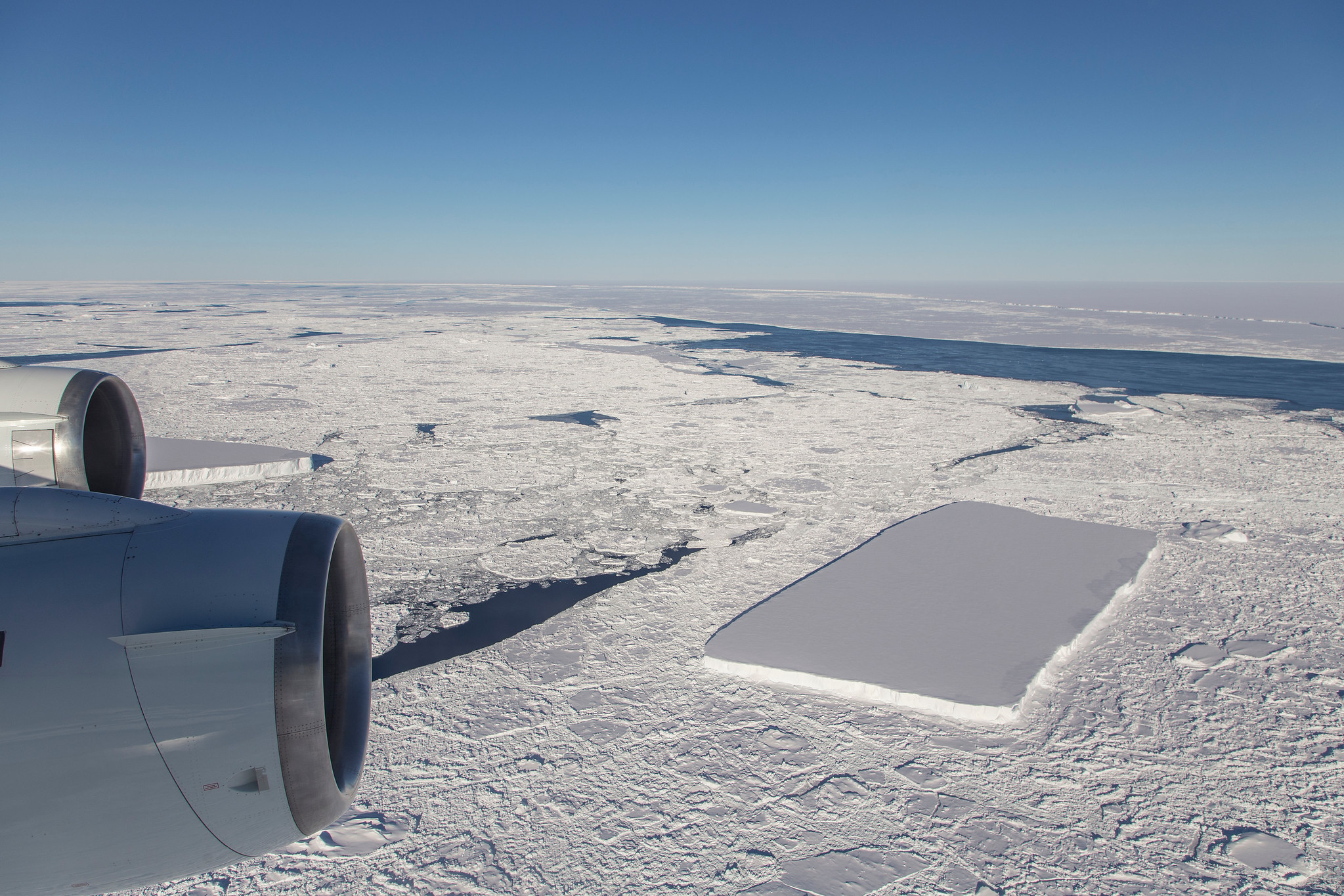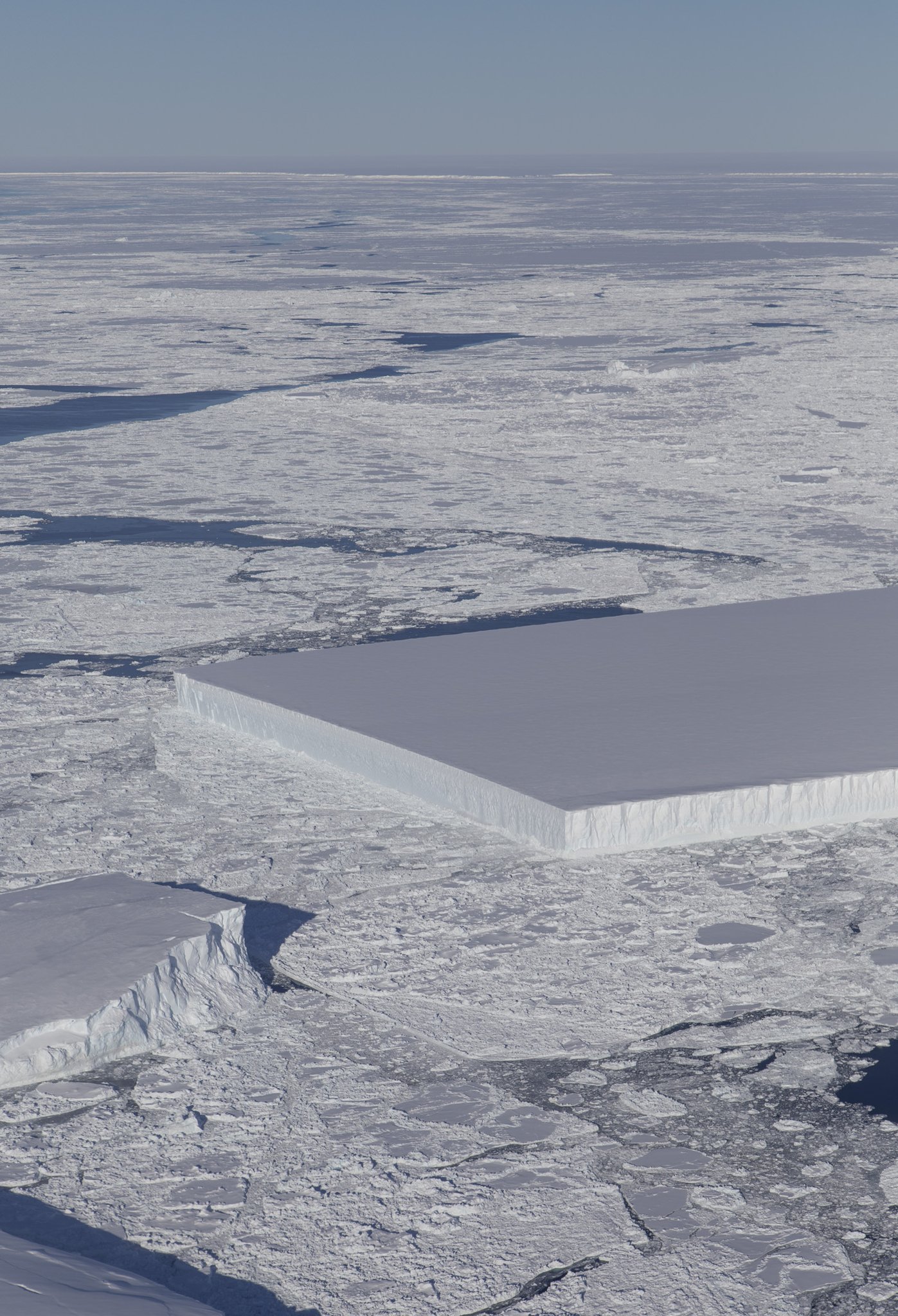The world recently got a look at a gloriously sharp-cornered "tabular iceberg" in a photo snapped by NASA scientist Jeremy Harbeck. Taken during an Oct. 16 research flight over the northern Antarctica Peninsula, the picture recently went viral.
Well, it turns out that Harbeck spotted multiple tabular bergs bobbing in the frigid sea close to the now-famous one that day. In fact, one other rectangular iceberg — let's call it Tabular B, and the first-seen one Tabular A for simplicity's sake — takes center stage in a newly released photo. [In Photos: Huge Icebergs Break Off Antarctica]

The new image also shows one corner of Tabular A poking above an engine of Harbeck's plane, as well as the gigantic tabular berg known as A68 off in the distance.
A68, which is about the size of the state of Delaware, calved off the Larsen C ice shelf in July of 2017. Tabular A and Tabular B, along with a number of other similar sheet-cake bergs in the area, are products of that same breakup, NASA scientist John Sonntag said in a newly released video featuring footage from Harbeck's flyover.
"I was actually more interested in capturing the A68 iceberg that we were about to fly over, but I thought this rectangular iceberg was visually interesting and fairly photogenic, so on a lark, I just took a couple photos," Harbeck said in a NASA statement Tuesday (Oct. 23).

Harbeck is a senior support scientist with Operation IceBridge, a NASA project that surveys polar ice from the air. (Sonntag is the IceBridge mission scientist.) Harbeck's Oct. 16 flight originated from the city of Punta Arenas, in southern Chile. The flight was part of a five-week IceBridge "deployment" that's scheduled to run from Oct. 10 through Nov. 18, NASA officials said.
Tabular icebergs crack off the edges of ice shelves. The bergs with strikingly straight edges and sharp corners are relatively fresh, as the erosional action of wind and waves hasn't yet had time to smooth these features down.
Sign up for the Live Science daily newsletter now
Get the world’s most fascinating discoveries delivered straight to your inbox.
Mike Wall's book about the search for alien life, "Out There," will be published on Nov. 13 by Grand Central Publishing. Follow him on Twitter @michaeldwall. Follow us @Spacedotcom or Facebook. Originally published on Space.com.











